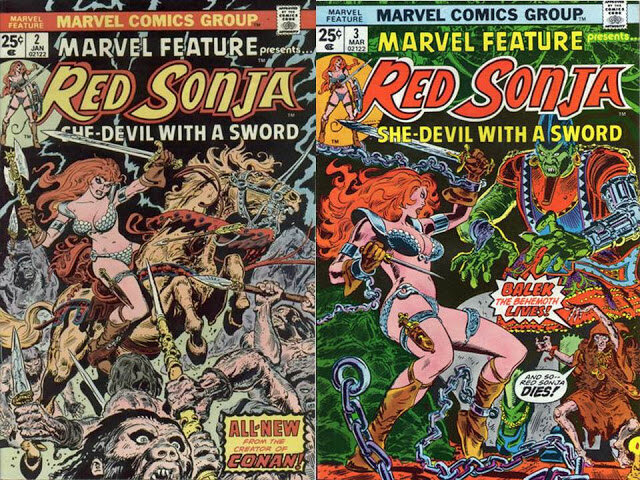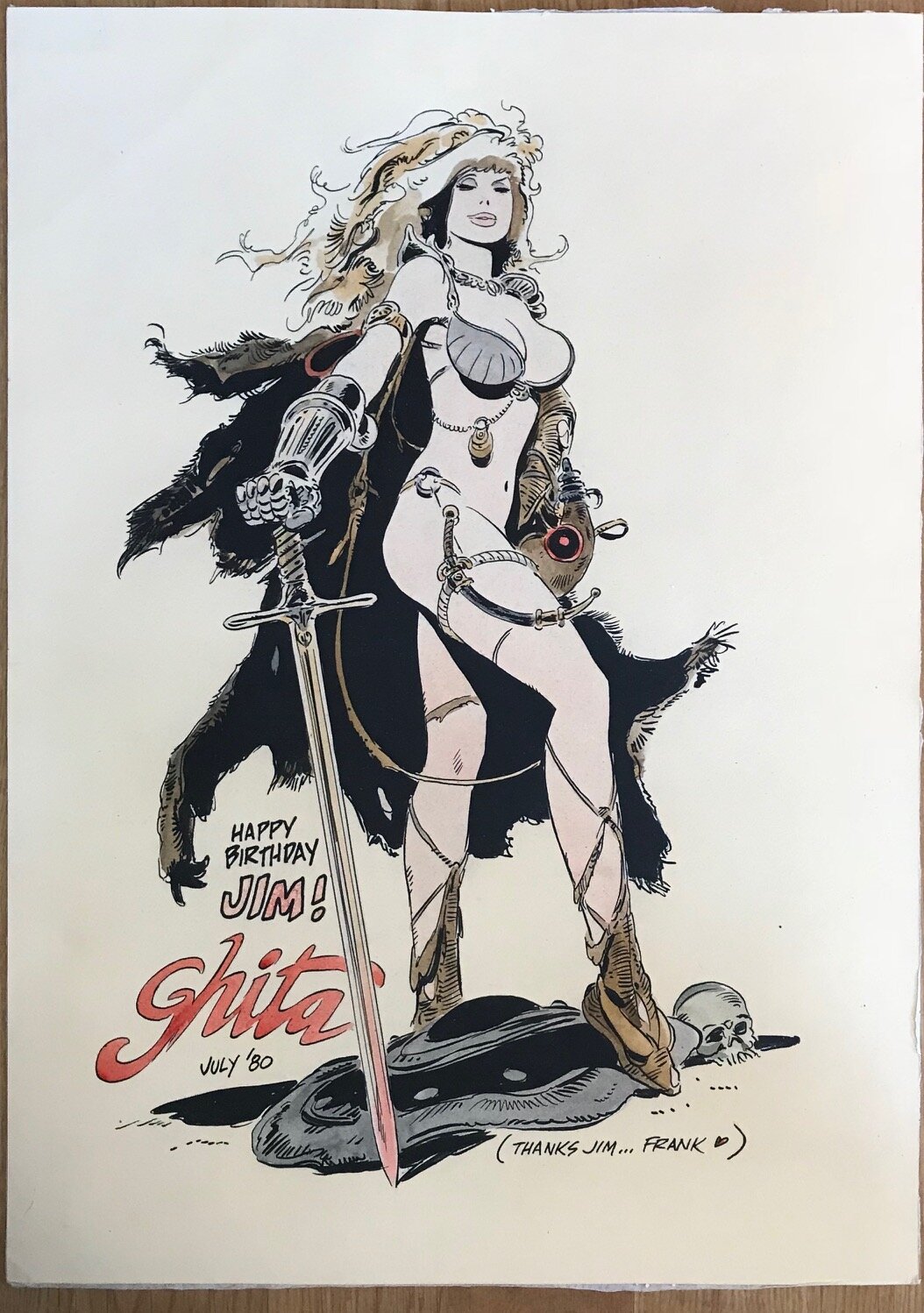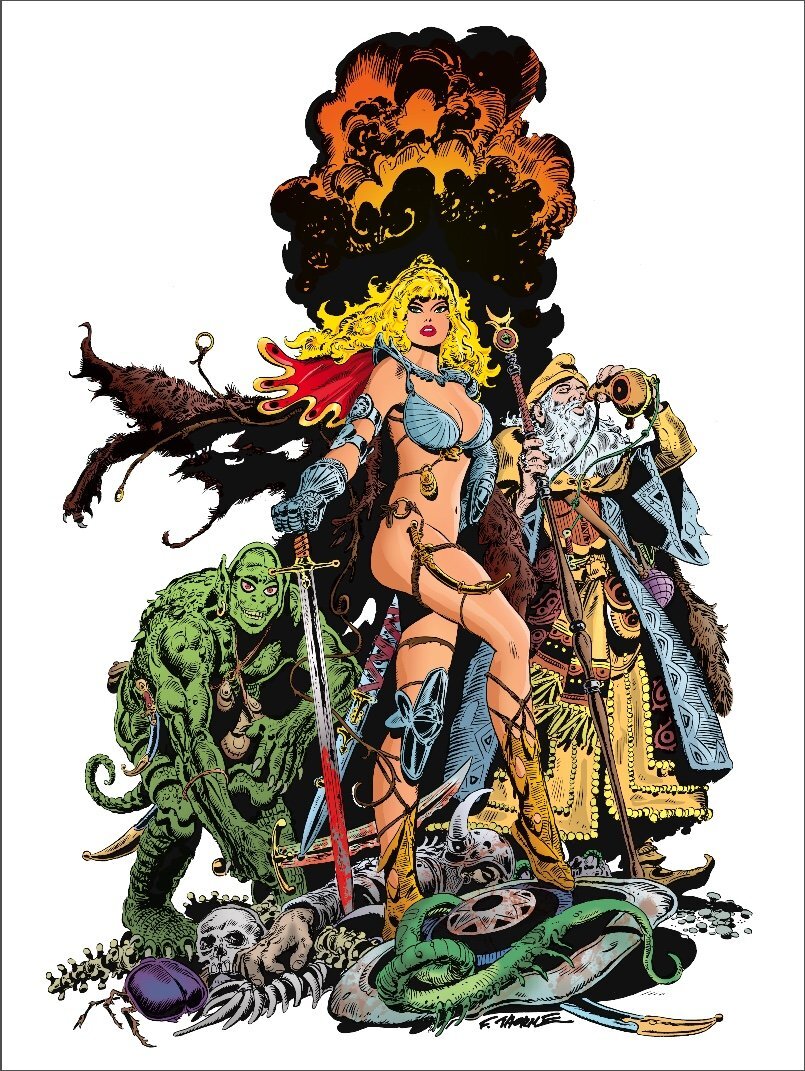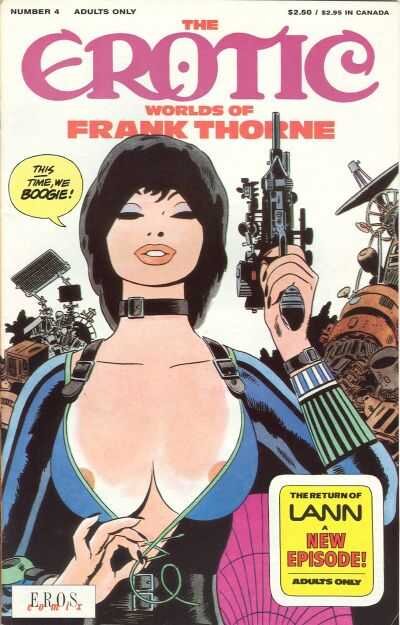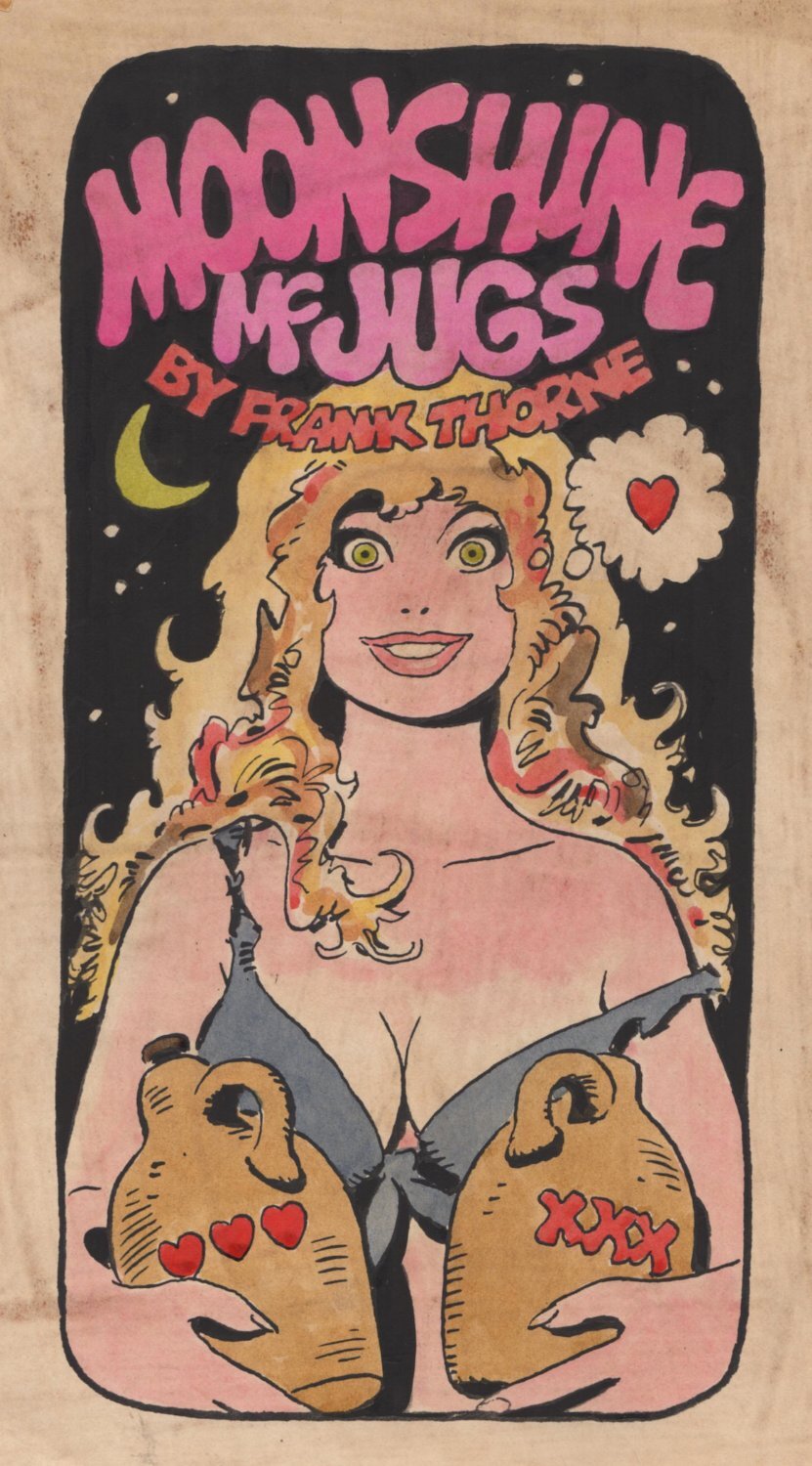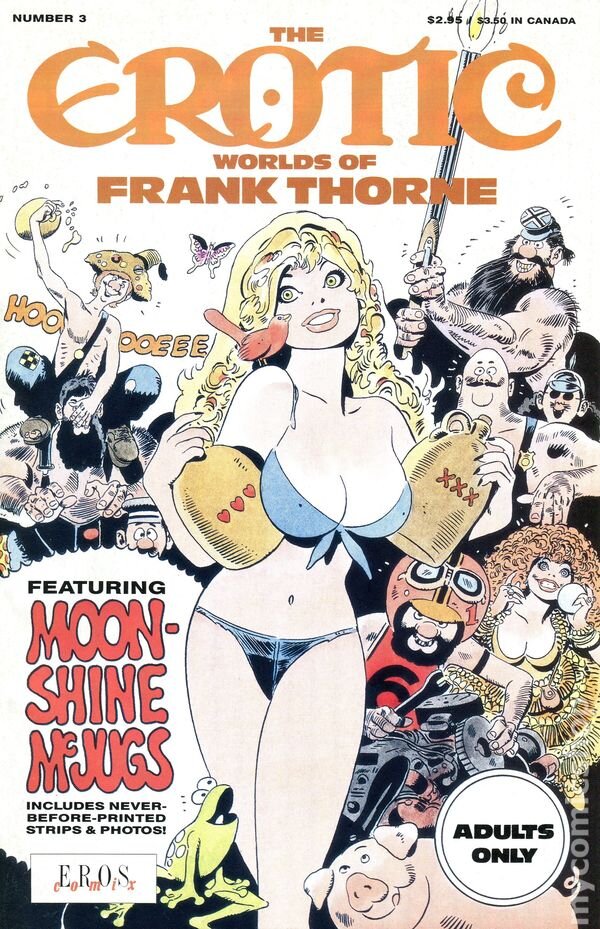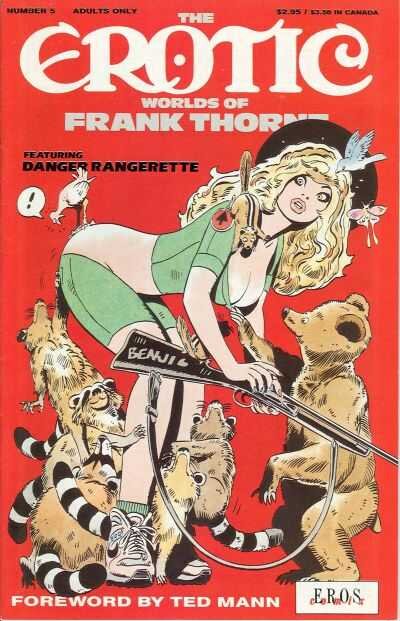Frank Thorne Turns 90
Frank in 2017, most likely busy drawing pictures of hot women.
"I LOVE drawing women." -- Frank Thorne
Today a comics legend turns ninety years old. Frank Thorne has been called the "comics' greatest dirty old man". For those in the DMR Books portion of the Venn Diagram, Frank is probably best known for his classic run on Marvel's Red Sonja in the mid-'70s. However, his long and--as he puts it--"ignoble" career involves much, much more than Red Sonja.
Frank Thorne was born in 1930, a proud son of Rahway, New Jersey. The year 1930 puts him clear back before the literary birth of Conan the Cimmerian and before the death of Robert E. Howard. Thorne has stated that he always wanted to be a cartoonist. Here's what Frank had to say about his early days as a working artist:
"Let's start with Alex Raymond and Harold Foster, they ruled in my generation. I was a Raymond clone in my teens. I did several pulp magazine illustrations in the late 40s. Inexcusably bad. But, as luck would have it, I walked into King Features with crude samples of some of the comic book work done while I was attending Art Career School atop the Flatiron Building in Manhattan."
Yep, Frank Thorne was doing illos for pulp mags while still a teenager. His mention of Alex Raymond and Hal Foster is no surprise at all. Over the past few years, I've read many a memoir and interview with various artists. Frazetta, Kirby, Kubert and many more were all fans of those guys. Frank Thorne was no different.
King Features gave Thorne the Perry Mason newspaper strip, which paid the modern equivalent of about two grand a week. Frank was just twenty-one years old.
A brief aside is warranted here. Back in the '50s--and for decades after--newspaper strips were the Big Show for cartoonists/sequential artists. Comic books were the minor leagues with crap pay. Frank Thorne spent about two years at Standard Comics before jumping to King Features. He was in the big leagues now.
Thorne spent two years drawing Perry Mason, at which point King Features dropped the strip. Undaunted, Frank took his skills over to Western Printing's comic book line, where he worked on Jungle Jim, Flash Gordon, Tom Corbett: Space Cadet and several other titles. After a few years there, he got another newspaper gig: Dr. Guy Bennett. That job ran from 1957 to 1963, with Frank also doing some high-paying commercial art jobs.
Thorne's artwork was an easy sell, since it was an admitted "clone" of Alex Raymond's highly popular style. However, according to Frank, it was during the late '50s when he finally began breaking away and pursuing his own style.
In 1964, Thorne started working for Gold Key Comics, where he and ex-pulpster, Otto Binder, created the post-apocalyptic adventure comic, Mighty Samson. Here's how Frank recalls that period:
"It was my first opportunity to design all the characters and create a world of my own. It wasn't the last. Meanwhile, I was doing a lot of titles over at DC: Tarzan, Hunter's Hellcats, Twilight Zone, Boris Karloff Presents, assorted others... then Tomahawk, Hawk, Son of Tomahawk, Korak, Son of Tarzan, and then Red Sonja, daughter of none."
Roy Thomas has called this cover the single best rendition of Red Sonja ever created. Take that, Boris!
"Red Sonja, daughter of none." That brings us up to 1975's Marvel Feature #2 starring Red Sonja. Somebody in the Marvel Bullpen had suggested Frank as the artist for the book to Roy Thomas. Roy--who was handling various comics, going through a divorce and moving to California--apparently said, "Fine by me." Years later, Roy would comment, "Little did I know what I was getting myself, and the world of comics, into!"
Frank--working from a Bruce Jones script--really threw himself into the project, drawing, inking and lettering the entire issue. Roy Thomas would later recall that, after reading Marvel Feature #2 in his capacity as series editor, "There was no doubt in my mind: Frank Thorne had the Red Sonja berth for as long as he wanted it!"
Thorne would illustrate the rest of the issues of Marvel Feature up through #7, after which Big Red moved to her own title. Upon completing Red Sonja #11, Frank quit. Roy says, in no uncertain terms, that Thorne was never fired. Frank has always stated that Thomas was and is his favorite writer and editor. I haven't seen any comment from Thorne going into detail about his departure. Roy Thomas thinks that Frank just wanted to do his own thing and that seems to be the case.
Regarding that period Roy Thomas has this to say:
"In one sense, the Red Sonja of the 1970s will always belong to Frank Thorne."
Frank didn't let the grass grow under his feet. The late '70s were the Golden Age of high-end portfolios created by comic artists. Thorne soon published the Wizards and Warrior Women portfolio. One of the plates was titled "Ghita" and depicted a voluptuous, blonde sword-woman who closely resembled Red Sonja. It was the debut of Thorne's new creation: Ghita of Alizarr.
Ghita was basically a lustier, loonier version of Red Sonja. The series would run in Warren Publishing's 1984/1994 magazine from 1978 to 1983. During the same period, Frank Thorne developed the Moonshine McJugs character for Playboy magazine. Moonshine, sort of a bawdy riff on Al Capps' Li'l Abner, ran for over twenty years. Frank considers her his favorite amongst all the characters he's created.
However, Frank didn’t stop with Ghita and Moonshine. He created Lann for Heavy Metal and Danger Rangerette for National Lampoon. Frank simply couldn’t resist giving more hot women to his fans. Feel free to click on the carousel gallery below to check out all of them.
Happy birthday, Frank, and thanks for all the fine women.




